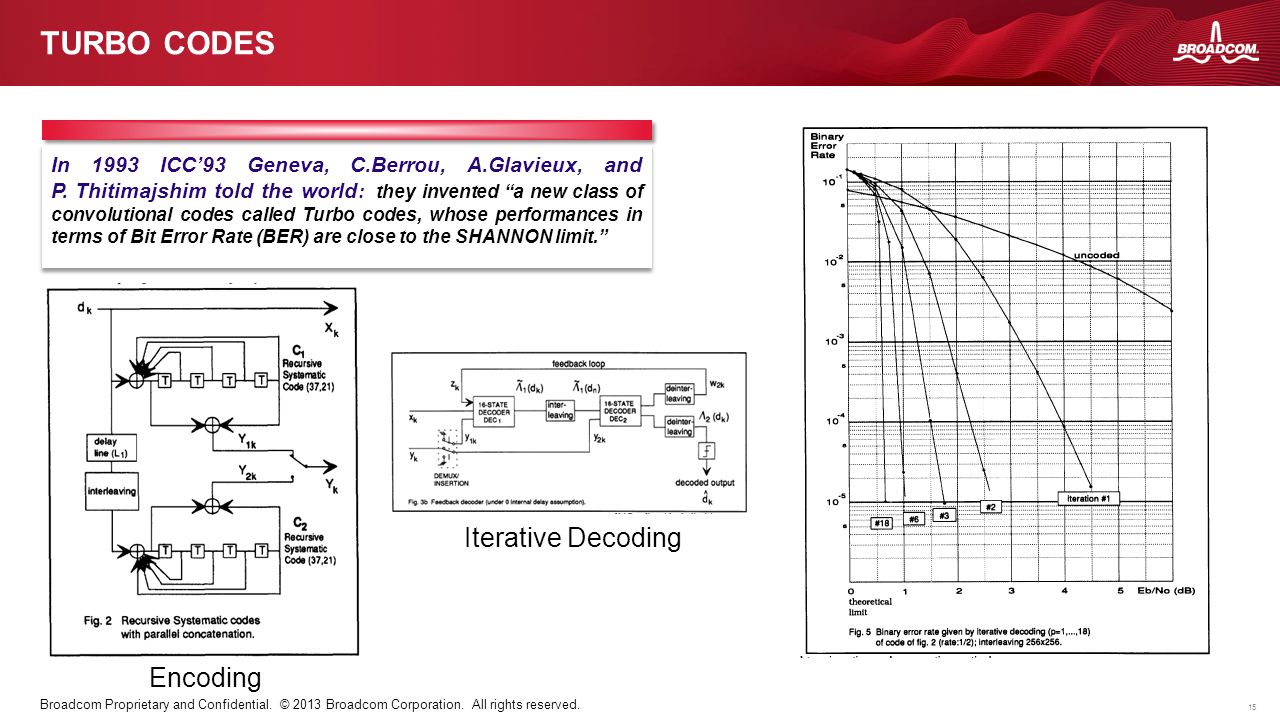C Program For Convolutional Code Ber


./viterbi_main 3 7 5 1011 More Features • It supports reading input from stdin or from commandline arguments. When reading from stdin, it ignores blank lines or comment lines (which start with #). • It supports any number of generator polynomials. • It can perform convolutional encoding by providing --encode commandline flag.
• It supports a different notation of generator polynomials by providing --reverse_polynomials commandline flag. Here are more options to run the program. Show help message.
Figure 1: Convolutional code with Rate 1/2, K=3, Generator Polynomial [7,5] octal. From the Figure 1, it can be seen that the operation on each arm is like a FIR.
./viterbi_main 3 7 5 1011./viterbi_main 3 6 5 00101011./viterbi_main 7 91 11./viterbi_main 7 91 117 100111./viterbi_main --reverse_polynomials 3 3 5 00101011./viterbi_main --encode 3 7 5 10001./viterbi_main --encode 3 6 5 1001101./viterbi_main --encode --reverse_polynomials 3 3 5 1001101 Error Handling All inputs are validated, and proper error messages will be output. • The constraint should be greater than 0.
• A generator polynomial should be greater than 0 and less than 1 where N is an integer. Otherwise some bits must be missing during transmission. We will fill in appropriate number of trailing zeros.
Running Unit Test Run unit test. Make viterbi_test &&./viterbi_test If the test passes, it will output PASSED and the end of the output; otherwise, the test program aborts with assertion error. There are a few sample cases in the unit test, some are with manually injected bit errors. It also generates random messages of length 8, 16 and 32 for several different convolutional codes and test if they can be properly encoded and decoded. Dependencies The code is self-contained, meaning it depends on nothing but the C++ standard library. The purpose is to make it easy to be integrated in any project.
Download El Matador Pc Iso on this page. Convolutional codes differ from by means of method of operation. A convolutional encoder operates over serial data, whereas block codes operates over a block of input data. Also different is the utilization of memory elements in the convolutional encoders. In the case of block codes, there is no memory element involved in the generation of encoded data.
Convolutional codes are specified as (n,k,L), where n is the number of output bits from the encoder, k is the number of input bits to the encoder and L is the constraint length of the encoder. Disparate expressions for constraint length are often found in different text books but the fundamental idea is same The constraint length is used to calculate the number of memory stages or flipflops used in the encoder. As long as we know L and the underlying formula we can calculate the number of memory stages (m). So it does not really matter which expression for L is used. The constraint length is expressed as (L = k(m+1) ) In some text books it is expressed as L=k x (m) and in some other books it is even expressed as L=m+1.We will use the first expression throughout our discussion. We will take up a simple convolutional code (2,1,3) where n=2, k=1 and L=3 ( the expression L=k(m+1) is used).Lets construct the encoder from the above information. The encoder is constructed with 1 input bit, 2 output bits and 2 memory elements.